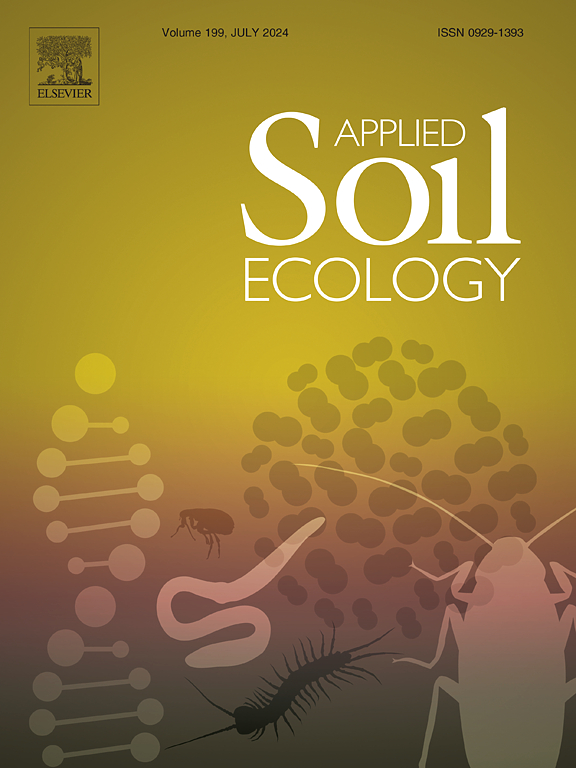Shrub encroachment modulates soil microbial assembly, stability, and functional dynamics in temperate marshes: Emphasizes the key role of bacterial two-component systems
IF 4.8
2区 农林科学
Q1 SOIL SCIENCE
引用次数: 0
Abstract
The physical and chemical changes that accompany shifts in plant community composition directly impact marsh soil microbial communities. This leads to uncertainty in microbial communities and plant feedback, which limits our ability to predict marsh biogeochemical cycling and microorganism responses to changes in plant community composition. Therefore, this study employed high-throughput sequencing to elucidate the mechanisms regulating marsh soil microbial community assembly, stability, and functional profiles in response to varying levels of shrub encroachment. The results showed that shrub encroachment significantly altered the composition of soil microorganisms, leading to increased phylogenetic conservation within bacterial and fungal communities. Following shrub encroachment, bacteria sensed, responded, and adapted to environmental changes through the two-component system, shifting community assembly from deterministic (variable selection) to stochastic (homogenizing dispersal) processes. However, fungal community assembly was weakly responsive to shrub encroachment remained primarily stochastic, with the dominant mode transitioning from undominated processes to homogenizing dispersal, largely due to the differential expression of metabolic pathways and interactions (exchange of material, energy, and signaling) with bacterial two-component systems. Additionally, shrub encroachment enhances the networks scale and complexity of soil microorganism, promotes competitive behaviour, and increases community stability while reshaping functional profiles. Further investigation into these issues will contribute to our understanding of microbial ecology theory, thereby providing more effective strategies and methods for the management and conservation of marsh ecosystems.

灌木入侵对温带沼泽土壤微生物组合、稳定性和功能动态的调节:强调细菌双组分系统的关键作用
植物群落组成变化所伴随的物理和化学变化直接影响湿地土壤微生物群落。这导致了微生物群落和植物反馈的不确定性,限制了我们预测沼泽生物地球化学循环和微生物对植物群落组成变化的响应的能力。因此,本研究采用高通量测序技术来阐明沼泽土壤微生物群落组成、稳定性和功能特征对不同程度灌木入侵的响应机制。结果表明,灌丛入侵显著改变了土壤微生物的组成,增加了细菌和真菌群落的系统发育保护。在灌木入侵后,细菌通过双组分系统感知、响应和适应环境变化,将群落组装从确定性(变量选择)转变为随机(均质分散)过程。然而,真菌群落组装对灌木侵蚀的反应较弱,主要是随机的,优势模式从非支配过程过渡到均匀扩散,这主要是由于代谢途径和与细菌双组分系统的相互作用(物质、能量和信号交换)的差异表达。此外,灌木入侵增强了土壤微生物网络的规模和复杂性,促进了竞争行为,增加了群落的稳定性,同时重塑了功能剖面。这些问题的进一步研究将有助于我们对微生物生态学理论的理解,从而为湿地生态系统的管理和保护提供更有效的策略和方法。
本文章由计算机程序翻译,如有差异,请以英文原文为准。
求助全文
约1分钟内获得全文
求助全文
来源期刊

Applied Soil Ecology
农林科学-土壤科学
CiteScore
9.70
自引率
4.20%
发文量
363
审稿时长
5.3 months
期刊介绍:
Applied Soil Ecology addresses the role of soil organisms and their interactions in relation to: sustainability and productivity, nutrient cycling and other soil processes, the maintenance of soil functions, the impact of human activities on soil ecosystems and bio(techno)logical control of soil-inhabiting pests, diseases and weeds.
 求助内容:
求助内容: 应助结果提醒方式:
应助结果提醒方式:


